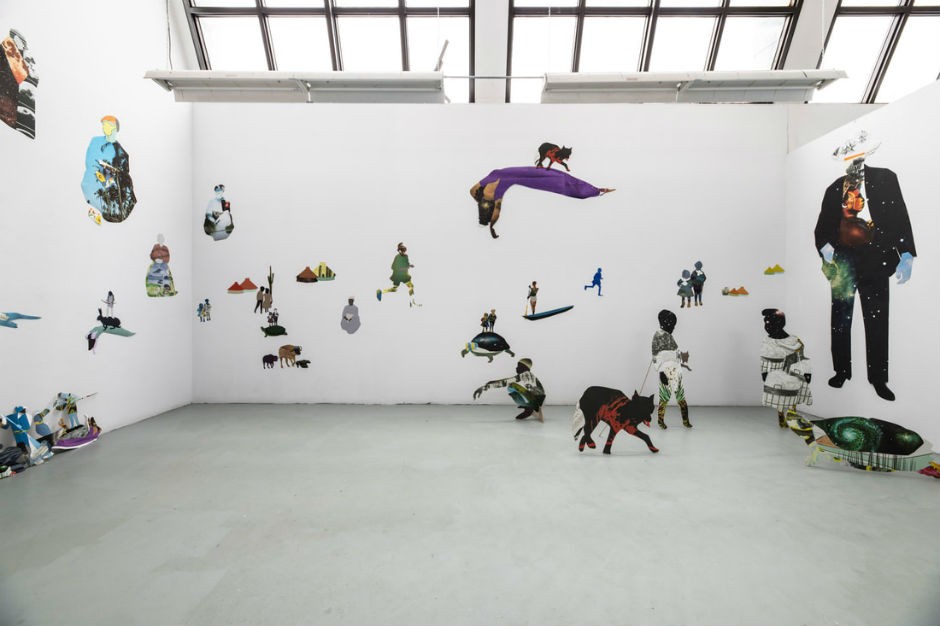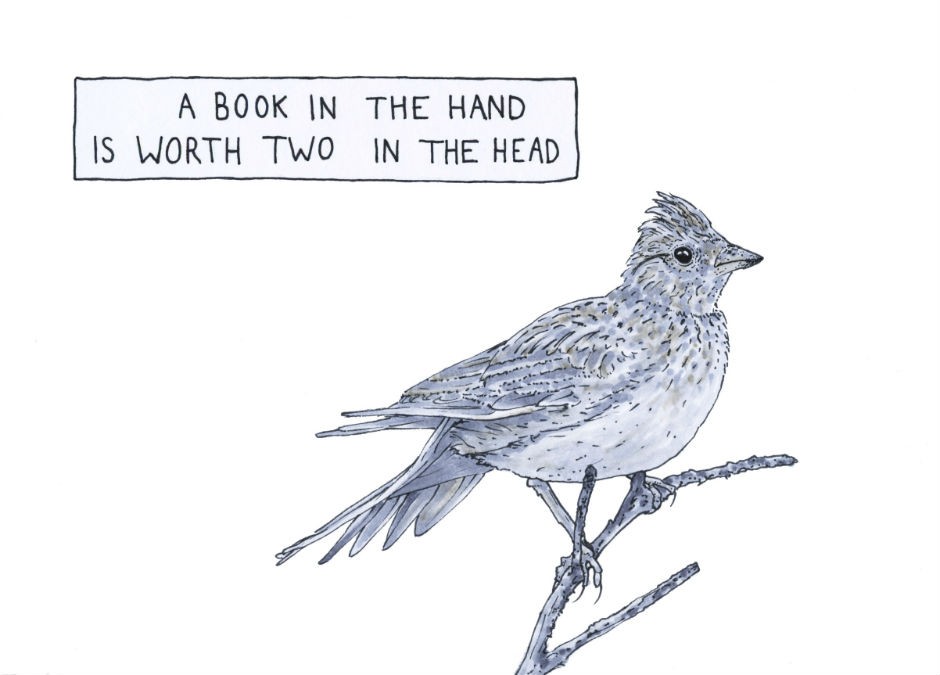Emilie St-Hilaire is a multidisciplinary artist and doctoral candidate in Concordia’s Humanities PhD program. She is studying the idiosyncratic and widely misunderstood practice of reborn doll collecting from a feminist perspective. She has published in the journal RACAR on the topic of research-creation and has exhibited her artwork at galleries and festivals nationally and internationally. Her doctoral research has been supported by scholarships from the FRQSC, Concordia University, Hexagram Network and Francofonds.
Blog post
'Make 10, have a show!'
 Wanderings (2019) by Anna Binta Diallo
Wanderings (2019) by Anna Binta Diallo
My good friend and fellow artist Anna Binta Diallo and I took our first painting class together at the University of Manitoba with professor Kevin Kelly in the early 2000s. Kevin is a lively and charismatic instructor who encouraged us to make the most of our time in art school. Anna and I both recall Kevin at some point looking at our paintings and saying, “Fabulous! Fantastic! Make ten, have a show!”
We chuckled together at our instructor’s enthusiasm, surely it couldn’t be that simple. The mysterious road toward becoming an artist had thus far involved learning the highlights of art historical events over the past several thousand years, discovering the many ways we could ruin a roll of film and sitting through group critiques where our classmates told us what they would do to improve our work.
Anna and I went on to complete MFA degrees and have ongoing careers as artists. We agree that in retrospect “make ten, have a show” is actually pretty solid advice. Here are five reasons why we came to this conclusion.
1. Don't overthink it
Getting out of the idea phase and actually making work is crucial. First, there’s the obvious fact that no one can see your ideas — let alone give constructive feedback — on what you imagine you will make.
Secondly, some visual artists spend so much time designing the perfect work in their head that by the time they actually put pen to page, the reality of what they’re able to produce is inevitably disappointing. Even if you don’t have the perfect materials or space available, just start making.
2. Learn from doing
Artmaking is a process. Making 10 works does not mean making 10 identical works. It’s about pursuing a theme, subject or technique until an evolution occurs. Learning by doing is more valuable than the initial concept. The 10th work will not be the same as the first.
 Drawing by Emilie St-Hilaire (2018)
Drawing by Emilie St-Hilaire (2018)
3. Set goals
Whether it’s 10, three or 25 works, setting a goal and achieving it develops endurance. Without any such structure, your sunny coffee-infused studio mornings might all blend together — days and then weeks slipping by without much to show for it. For others finding even a small window of time to produce can be the biggest challenge. Most artists are highly motivated to make work, but everyone has their strengths and weaknesses.
Some artists produce a ton but don’t document or apply to exhibit their work, others might do international artist residencies for years without showing their work or ever updating their website. Whether it’s remembering to get out of the studio occasionally, or finding gallery representation, goal-setting is just as important for artists as any other professional.
4. Show your work
"Have a show” means getting people to see your work. Many galleries have open calls for exhibitions, others organize through curators directly, and artist or student-led exhibitions are perhaps the quickest and easiest way to get your work into a public space. There’s no reason you can’t organize your own exhibition.
The experience of showing your work, chatting with people about it, listening to what they have to say and maybe even selling some work helps the artistic process immensely. Without instructors and classmates around, it’s possible to go a very long time without discussing your work with other people.
And to any non-artists reading this — go see art! It can offer you something you didn’t realize you needed.
5. You don’t need permission from anyone but yourself
For some artists, investing in a fine arts career can require convincing others of the virtues of this life choice. Family or friends may question this path which offers less concrete, but potentially more rewarding outcomes than other fields. When you decide you want to make art — whether that’s full-, part- or quarter-time — give yourself permission to see where it takes you.
Surround yourself with supportive people, and, if you’re not sure where to start or what to do next — just make 10, and have a show!
Anna Binta Diallo is a Montreal-based artist and Concordia alumni of the graduate certificate in Digital Technologies in Design Art Practice. She completed her BFA honours at the University of Manitoba in 2006 and MFA with Trans-Art Institute in 2013.
About the author


